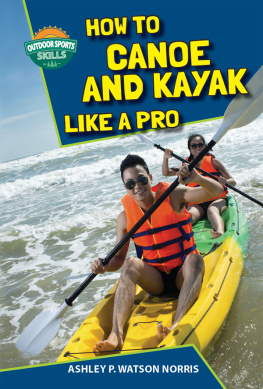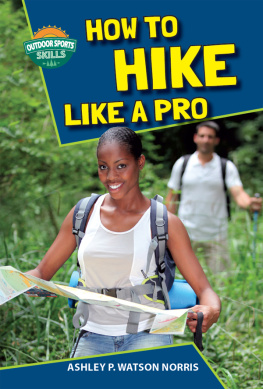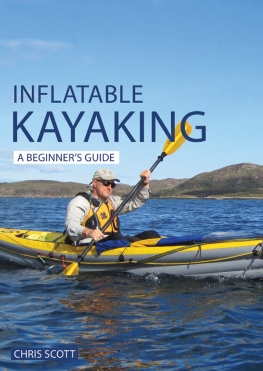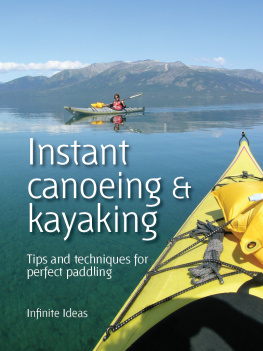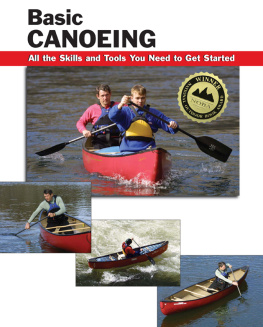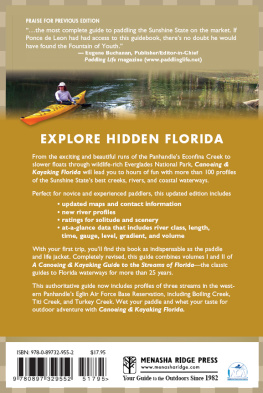Excitement Along the Waters Edge
Would you like to spend a day gliding across a shimmering tranquil lake or exploring the banks of a lazy winding river? Perhaps you are the type who would prefer battling the elements as you slice your way through roaring rapids? Whether you are out for adventure, or a peaceful day in the wild, canoeing or kayaking is for you. Find out about the different types of canoes and kayaks, how to paddle, safety tips, and the proper gear to get you started.

Canoes and kayaks open up a new, exciting world along the waters edge. They allow paddlers to go where cars, bicycles, motorboats, hikers, and swimmers cannot. These small watercraft can silently slip along the banks of rivers, lakes, and oceans. They can maneuver up small streams and creeks that large boats cannot navigate.
Gliding swiftly and silently over the water in a canoe or kayak gives complete freedom and control to the paddler. They control their speed and decide on their destination. A paddler can find privacy and study nature up close in quiet river waters or answer the challenge of a fast-moving white-water rapid.

Image Credit: Thinkstock: JupiterimagesCollection/Stockbyte
Using a canoe or kayak makes exploring smaller bodies of water like creeks or river banks possible.
By packing in a smart way, canoes and kayaks can be used for an all-day outing or for several days of camping. Canoes can be large enough to hold several people, and sufficient fodd and supplies.

Image Credit: Shutterstock: maratr
With a kayak, these young women are exploring.
Because canoes and kayaks are small human-powered watercraft, they are quiet, giving the chance to see wildlife up close and undisturbed. Remember to pack binoculars and a guidebook to identify plants and wildlife. Many will see animals drinking at the waters edge, such as foxes, deer, moose, or even wolves!
Paddlers can go alone or bring their best friend, whether that is a human or a dog. The possibilities are endless.
Canoes are the pickup trucks of the boating world. They can carry lots of gear and a few passengers. They sit high on the water and provide good visibility. Canoes are more stable and easier to get into and out of than a kayak. Theyre best suited for calm water, but with the right equipment can go into rough water.

Image Credit: Shutterstock: Dr. Morley Read
People in some parts of the world still use canoes as simple and basic as the first canoes.
The very first canoes were logs that were paddled by hand or with poles pushed off the bottom of a riverbed. They evolved into hollowed-out trees, and then wooden or bone frames with animal skins stretched over them.
When Christopher Columbus landed in the New World he reported that the native Arawak Indians used hollowed-out tree trunks to navigate the sea. Columbus called them kenus . That is where the modern word, canoe, originates. American Indians have used various types of handmade canoes for thousands of years from readily available materials.
Modern recreational canoes are made from plastic, fiberglass, Kevlar, and aluminum. They have open tops, have pointed ends, and are long, light, and narrow. They usually fit several people sitting or kneeling. The paddler, or paddlers, face the direction of travel and use a single-bladed paddle to propel the canoe forward.

Image Credit: Thinkstock: RJAPHOTOCollection/iStock
For a quiet and patient canoer or kayaker, seeing some of natures beautiful scenery is one of the many great things that can be experienced while out exploring on the water. This young woman is kayaking in the Everglades.
Canoers can either sit or kneel. Sitting in a canoe is similar to sitting on a bench. The paddler sits on the seat with his or her legs bent at the knee. Many canoers kneel because it lowers their center of gravity, which makes the canoe more stable.
Kayaks are the rugged, off-road cars of the boating world. They are narrower and shallower than canoes. Kayaks have less cargo capacity than canoes, and are more maneuverable and faster in the water. Their sit-inside design allows kayaks to go over rougher water than canoes and not swamp, or fill with water.

Image Credit: Shutterstock: Ivan Smuk
Canoes come in various sizes. Some are built larger and with more seats to accommodate additional riders.
Kayaks were invented by the Inuit who lived in the Arctic and sub-Arctic areas of Alaska, Canada, Greenland, and northeast Russia. They have been in use for thousands of years to hunt and fish in the summer when the water is not frozen.
Inuits used bones and wood covered by animal skins to build their kayaks. They used boiled animal fat to keep the skin waterproof. Their paddles had blades at both ends to give them more control and power when navigating though rough waters.
Inuits, formerly called Eskimos, wore a seal-skin jacket called a tuilik that they laced to the kayak. If the kayak flipped over in rough, ice-cold water the tuiliks kept them relatively dry while they flipped their kayak right-side up again. This movement is still called an Eskimo roll.
Modern kayaks hold one or two people. Kayakers sit on a seat on the floor of the kayak with their legs extended in front of them. There are many different styles of kayaks. Most cover the paddlers legs. Recreational sit-on-top kayaks are the exception.
Paddling does not require extreme fitness, but being fit will make paddling even more fun. It will allow for longer trips and decrease the chances of getting injured. Beginning paddlers should start with short trips to build strength, skills, and make exercising part of a daily routine. As fitness increases, and water skills are developed paddlers can safely work their way up to longer, more difficult trips.

Image Credit: Shutterstock: Jim David
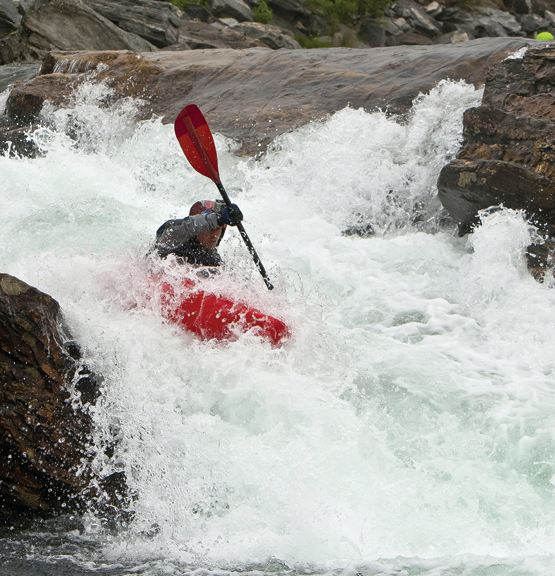
Image Credit: Shutterstock: Ivan Chudakov
Most people start off learning to kayak in calmer waters before going after the rougher and more dangerous white water.
Out-of-the-water training is important to provide full-body fitness. That means more strength, power, and endurance when paddling. Running and cycling are good ways to increase leg strength. Sit-ups and crunches will build strong abdominal muscles.
A good full-body workout is swimming. Plus, it is a crucial safety skill. Every paddler needs to know how to swim. If a boat flips, paddlers must be able to swim from the boat to shore.

